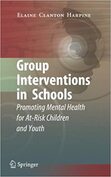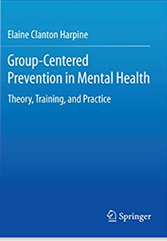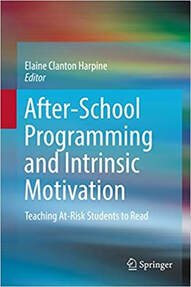 Thoughtful bears wear a mask.
Thoughtful bears wear a mask. Let’s check the facts for this week:
“The U.S. is averaging 108,065 cases a day, up 53% from two weeks ago…. Cases are higher in nearly every state, but the Northeast and Midwest are being particularly hard hit ….”
New York and Los Angeles are on high alert and urging people to wear a mask. Philadelphia and Massachusetts have very high numbers, and COVID may even be worse than what is being reported because many people are doing home testing and not reporting positive test results.
This is not a political stunt. This is real, and we need to remember that one million people have died in the U.S. from COVID.
COVID is back. Actually, it never went away, and the BA.2.12.1 is said to be even more contagious. So, get vaccinated and put your mask back on.
Mandatory Mask Mandates
Several schools are calling for mandatory mask mandates.
Brookline, Massachusetts (near Boston) has reinstated an indoor mask mandate for the town, including the schools.
“The mandate that began Monday requires everyone to wear a face covering over their mouth and nose while inside the library, senior center, all public schools and any other town-owned indoor spaces where the public gathers. … school dashboard, [has tracked a] steady upward trend since mid-April…. Data shows 232 students and staff in the district of more than 7,700 students tests positive last week.”
It’s not just Brookline. On May 24th, Philadelphia public schools also reinstated a face-mask mandate for students and teachers.
Of course, some students and teachers never stopped wearing their masks. Even when school boards gave in to the hysterical screaming over the fear of masks, some students and teachers, the smart ones, kept right on wearing their masks every single day, all day long.
As one man said, “I accidently fell asleep with my N-95 on; I’ve never slept better.”
So, with mask mandates returning, can the chanting, screaming hoards on the sidewalks and at the school board meetings be far behind? No, they’re probably printing off new signs right now.
But what about the children?
New Vaccines for Children
There are new vaccines for children. The booster for children 5 years and older is available now. The vaccine for children under 5 years of age will hopefully be ready in June.
- “… children 5 years and older already have access to a COVID-19 vaccine -- and now a booster shot -- through Pfizer's two-dose vaccine….”
- “Three doses of Pfizer and BioNTech’s Covid-19 vaccine produced a “strong immune response” in children under five, according to results from a clinical trial….”
So, what is stopping parents from getting their children vaccinated? Will misinformation on social media keep parents from vaccinating their children? I hope not. A study from Brown University this month stated that 318,000 lives could have been saved in the U. S. if people had just been willing to get vaccinated. Unfortunately, some of those people who died were children.
I can hear it now on the talk shows and social media sites. They’ll be screaming and yelling that children don’t really get that sick. That is false.
As Ibukun Kalu, a pediatric-infectious-disease specialist at Duke University stated,
“But children do fall seriously ill with COVID-19. Since the pandemic’s start, the virus has killed more than a thousand kids; thousands more have developed a serious inflammatory condition called MIS-C. The Omicron wave hospitalized the youngest Americans—the least vaccinated Americans—at rates higher than in any other surge.”
As Dr. Kalu explains, we should be taking every opportunity to vaccinate our children to protect them from getting COVID. Vaccinations save lives. Vaccinations keep children from getting severely ill. Forget the misinformation on social media, save the children. Children do not get a chance to decide for themselves. We, as adults, must make the decision for the children.
Misinformation Kills
Yes, I know, everyone is entitled to an opinion, but facts are facts, opinions are opinions. No, there are not two sets of facts. “Alternative facts” do not exist; that is just misinformation and lies. The fact is we need to vaccinate our children. And yes, they should be wearing masks.
Vaccinating children is a medical question, not a political play toy. Yes, COVID has killed children. Yes, we have the vaccine to keep that from happening—if we will only use it.
Mary Papenfuss wrote in a recent article for Huffington Post,
“While COVID-19 death rates in regions are affected by several factors, including things like wealth and access to health care, death rates closely followed rates of vaccinations, which Republican lawmakers, activists and media personalities often railed against. Not only did they urge people not to get the vaccine, but often spread frightening disinformation about the vaccines.”
Unfortunately, doctors and experts fear that many children will die even though the vaccine is now available for them. Don’t let politicians dictate how you care for your children. As I have said before, take medical questions to doctors and political questions to politicians. COVID is not a political question. It is a medical issue. Save the children; get your child vaccinated.
As Jennifer Nuzzo, an epidemiologist at Brown University School of Public Health, said,
"How you vote should not predict whether you die of COVID…."
So, yes, we should definitely be concerned about COVID. It has not disappeared, and it is just as deadly as always.
It has been proven over and over. When you put the vaccine and the N-95 mask together, you have provided children and parents with a degree of safety from COVID. No, it’s not perfect. Also, as has been proven, if you take the masks away, the vaccine may not be enough to keep you from getting sick. So, give your child every chance to grow up and be an adult. Get your child vaccinated and give them a mask.
Next time, I want to explore new research that is just becoming available showing that there may be a connection between COVID-19 and the new severe cases of hepatitis in children.






 RSS Feed
RSS Feed
